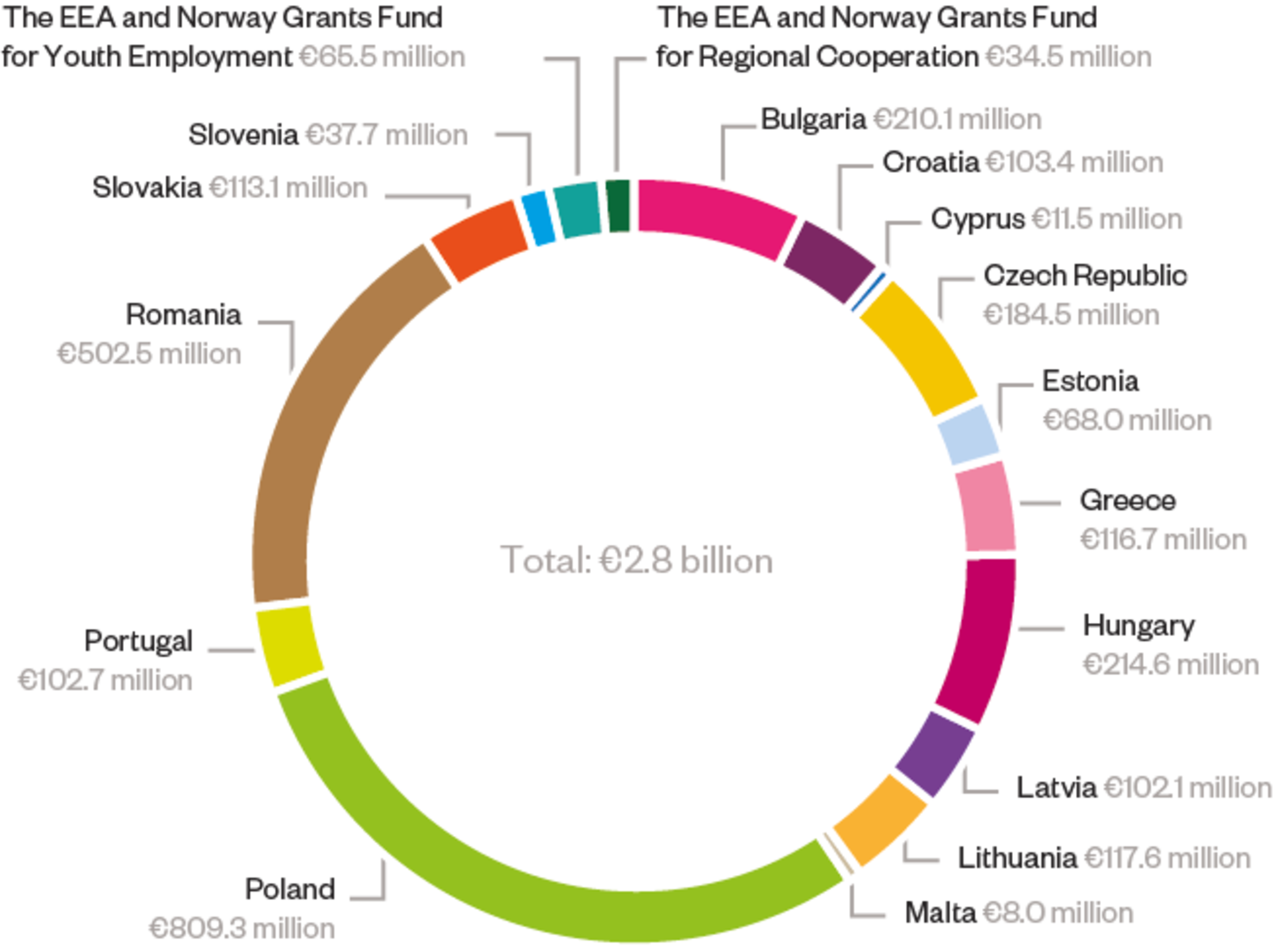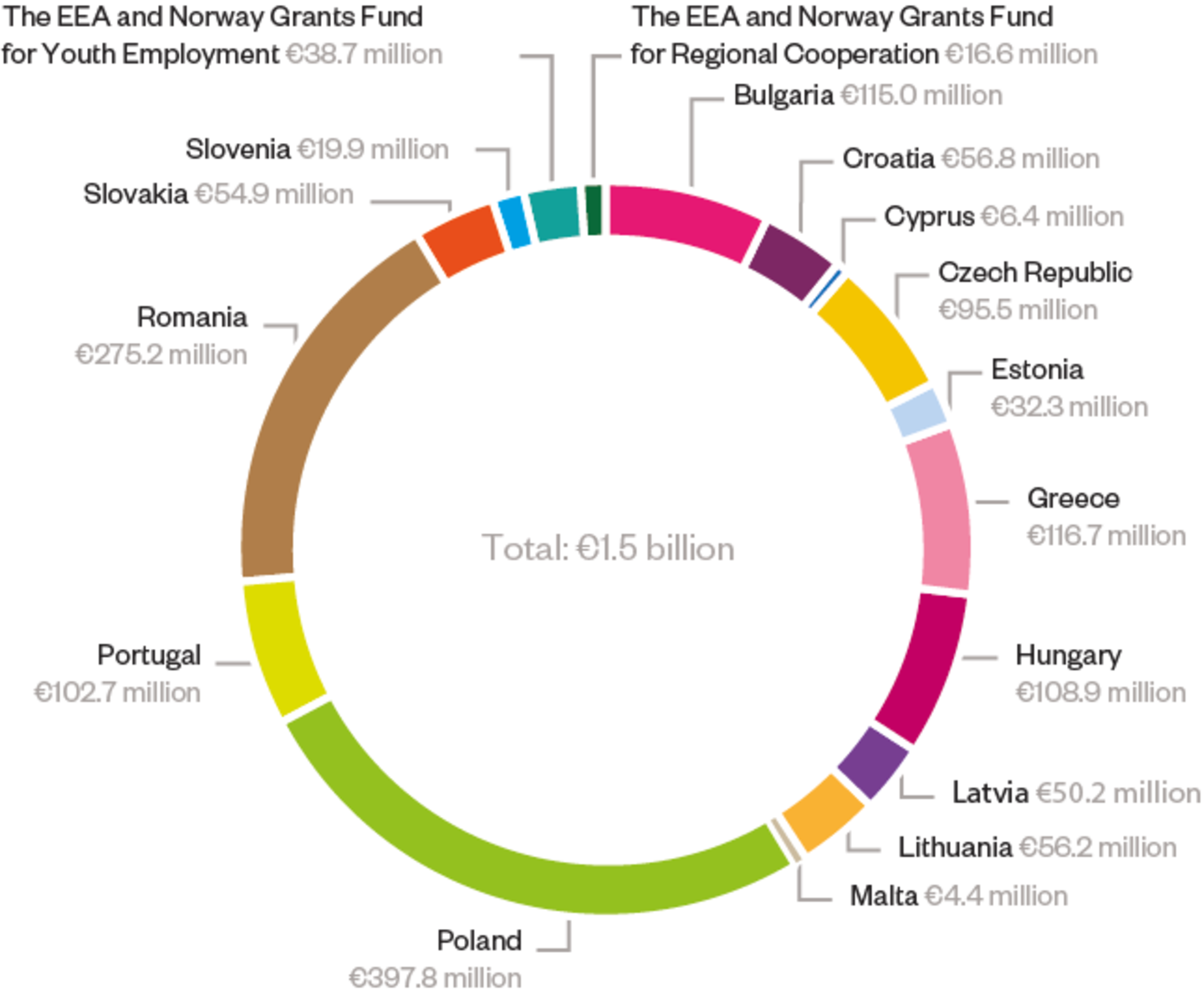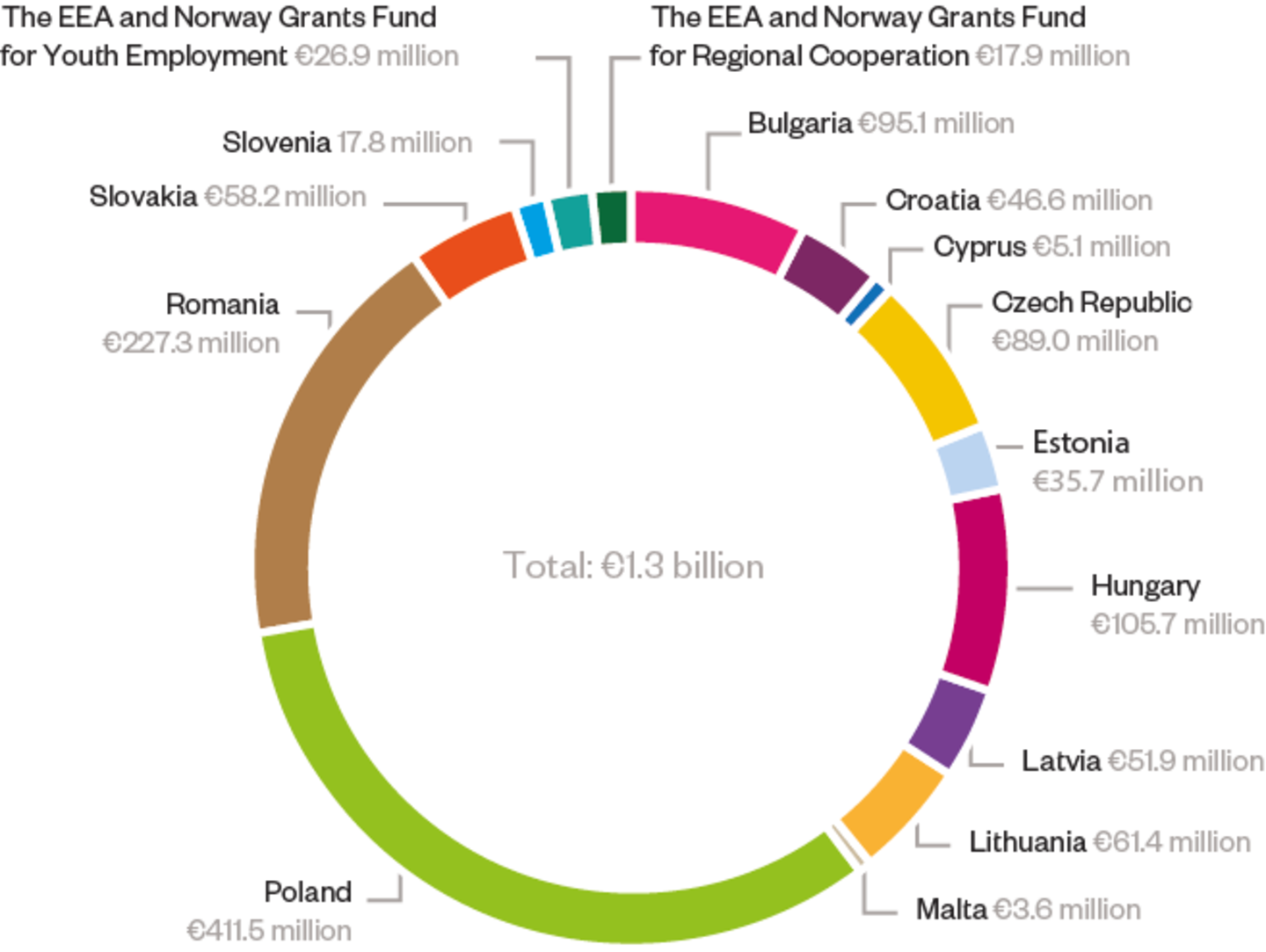The objective of the Grants is to reduce social and economic disparities and strengthen bilateral relations. This strengthens the internal market, leading to a more prosperous Europe.

What is the difference between the EEA Grants and the Norway Grants?
The Grants are composed of two funding schemes – the EEA Grants and the Norway Grants. The main difference between the two lies in where the funding comes from and which countries receive the funding.
The EEA Grants
The EEA Grants are funded jointly by all three donor countries – Iceland, Liechtenstein and Norway. The donor countries contribute according to their size and GDP – Norway provides approximately 95.8%, Iceland 3% and Liechtenstein 1.2%. During the 2014-2021 funding period, the EEA Grants amount to €1.5 billion.

The EEA Grants are allocated to 15 countries in Europe – Bulgaria, Croatia, Czech Republic, Cyprus, Estonia, Greece, Hungary*, Latvia, Lithuania, Malta, Poland, Portugal, Romania, Slovakia and Slovenia.
The decision-making body of the EEA Grants is the Financial Mechanism Committee. The committee is composed of representatives of the Foreign Ministries of Iceland, Liechtenstein and Norway.
The Norway Grants
The Norway Grants are funded by Norway alone and consist of €1.3 billion during the 2014-2021 funding period. The Norway Grants are allocated to the 13 countries which joined the EEA after 2004. This means that Greece and Portugal do not receive Norway Grants funding. The Norwegian Ministry of Foreign Affairs is the decision-making body of the Norway Grants.

*In 2021, the Donors and Hungary did not reach an agreement on the Fund Operator for the Active Citizens Fund. Consequently, no programmes will be implemented in Hungary under the EEA and Norway Grants during the 2014-2021 funding period.
Do you have any more questions? Visit our FAQ!